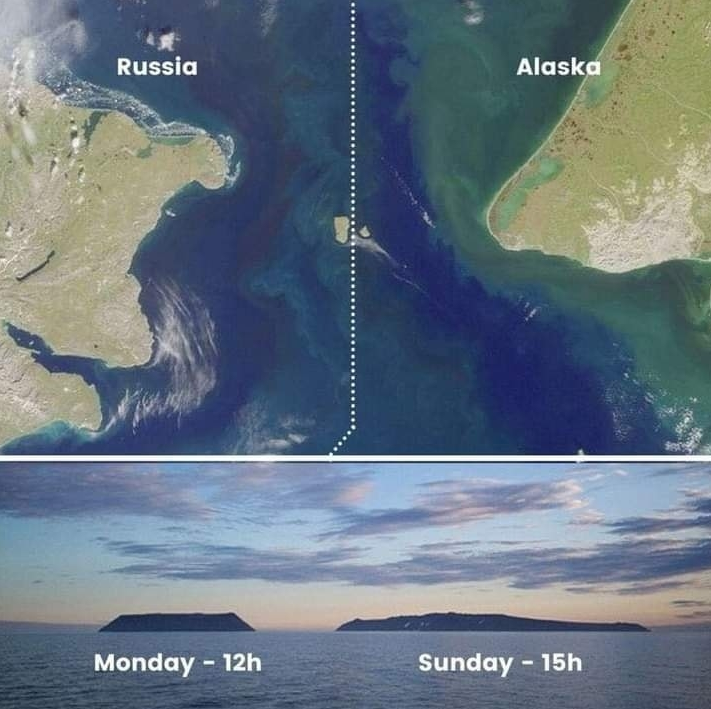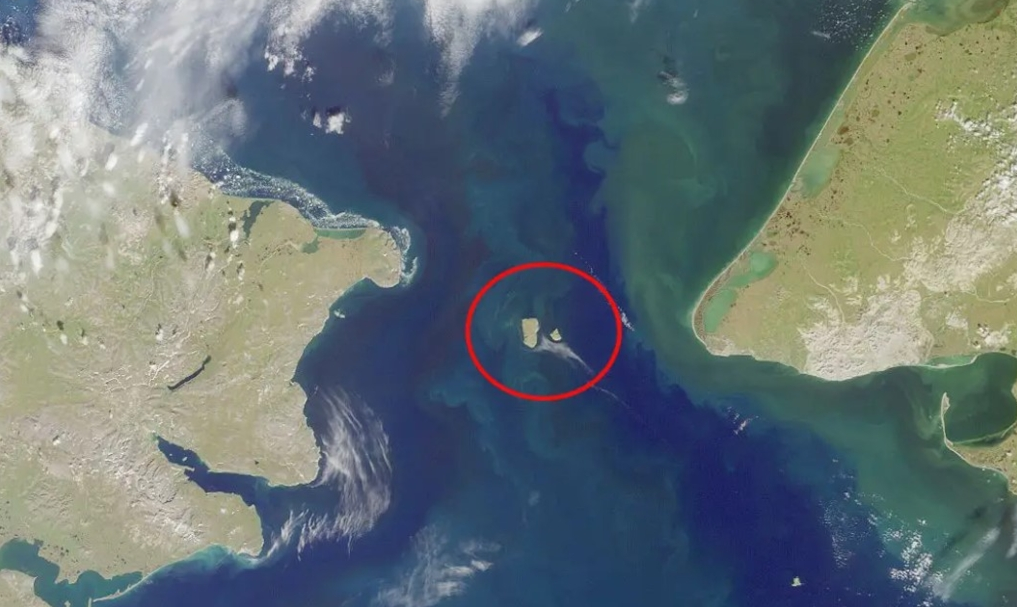Just 4 Kilometers Apart, Yet a 21-Hour Time Difference.
Others are reading now
There’s a place on Earth where, despite being very close, there are two different calendar dates. Practically, when it’s January 1, 2024, in one territory, it’s still December 31, 2023, just a stone’s throw away. This date difference lasts for 21 hours.
This is about the Big Diomede and Little Diomede islands, located between middle Siberia and the state of Alaska. These two islands are also known as Tomorrow Island and Yesterday Island.
The larger island, Big Diomede, is the easternmost point of Russia. Only 3.8 kilometers (2.4 miles) away is the smaller island, known as Little Diomede, which belongs to the United States.
Between these islands also passes the International Date Line (IDL), which is also the border between Russia and the United States. Moving between one line and the other resembles a true journey through time.
Also read
Tomorrow Island (Big Diomede) is 21 hours ahead of Yesterday Island (Little Diomede), even though they are only 3.8 kilometers apart. The IDL marks the border between one calendar day and the next, so Big Diomede is almost a day ahead of Little Diomede.

The Diomede Islands are a pair of rocky islands north of both countries, with small populations of Eskimos who rely on fishing to sustain their economy. According to the latest population census, only 160 people from the indigenous peoples live on Big Diomede, in the north. On the other hand, Little Diomede is uninhabited.
Some archaeologists believe that these islands began to be populated 3,000 years ago when hunters-gatherers in the region began to fish. Initially, according to this theory, they settled there seasonally, to hunt whales in the spring. However, these practices gradually disappeared as people settled there.
From a scientific point of view, the International Date Line separates two consecutive calendar dates. When a traveler crosses this line, they become a true time traveler. If they cross to the west, it’s a day behind (Thursday becomes Wednesday); if they cross to the east, it’s a day ahead (Thursday becomes Friday).
“The International Date Line functions as a demarcation line, separating two consecutive calendar dates. When you cross the line, you can become a time traveler!” states the National Ocean Service website.
The same source explains that, despite its name, the “International Date Line” does not have an international legal status, and countries are free to choose the dates they want based on political or economic interests. The line starts from the North Pole to the South Pole, having certain zigzags around political borders, such as eastern Russia and the Aleutian Islands of Alaska.


